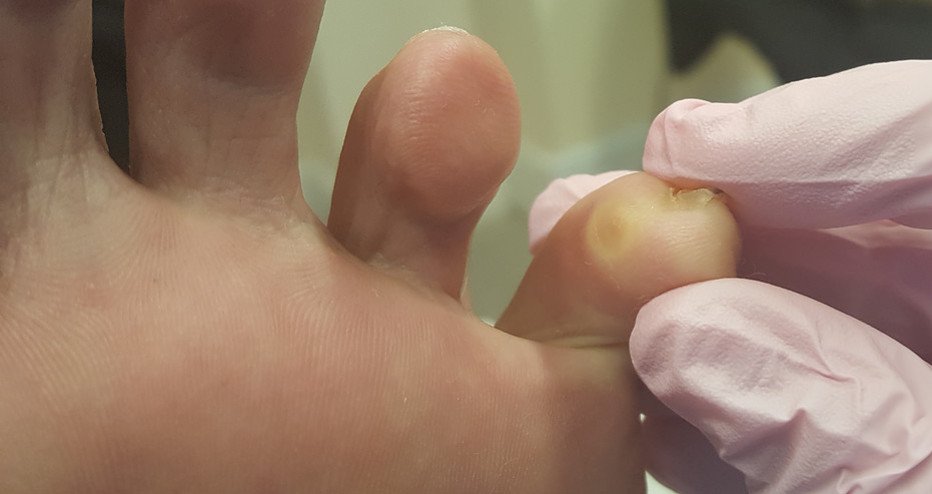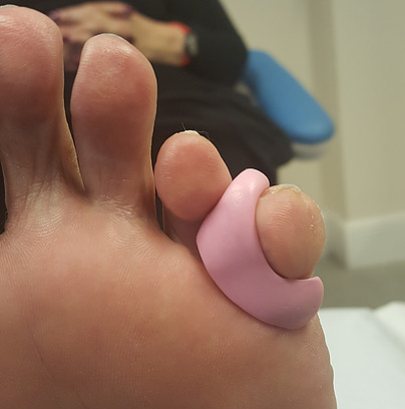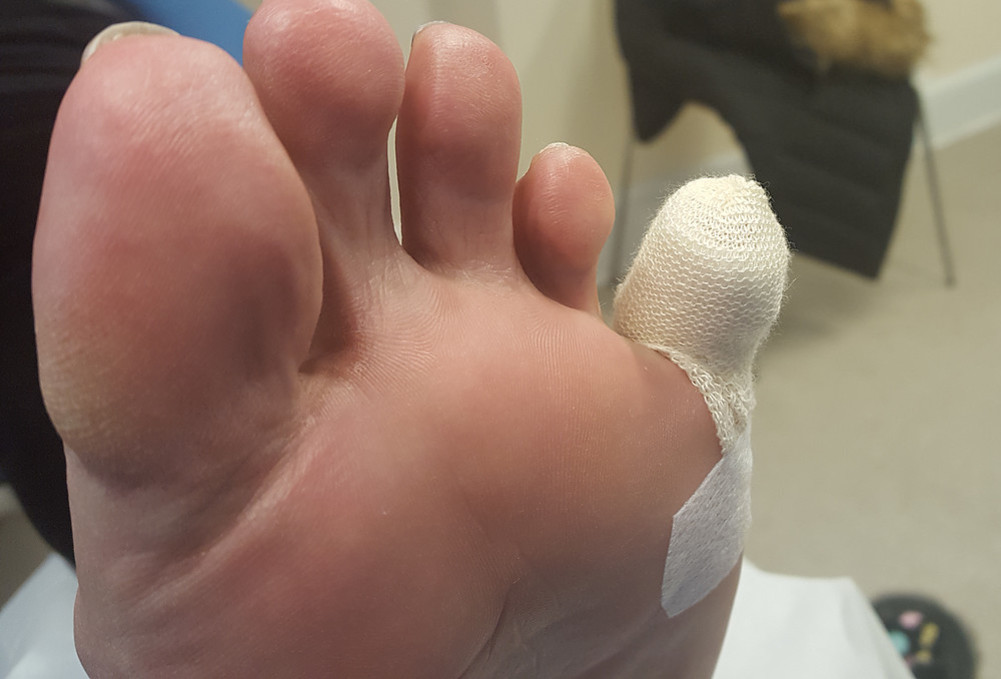SOFT CORNS (Why are they so sore when their name sounds so fluffy?)
Posted on 9th August 2017 at 15:51
A so-called soft corn is a plug of skin that occurs between the toes.
The natural moisture that we get between our toes keeps the skin soft but they can be incredibly painful.
This is because they are caused by pressure and movement, so two bony prominences (the equivalent of a knuckle in your hands) rub continuously and stimulate the skin to develop, flatten and become a plaque. The plaque may or may not have a hard centre.



The pain is caused by the plaque pressing on the joint underneath the skin.
Well that’s all very well but OUCH it hurts!
It is very tempting to buy a corn plaster promising pain relief and no doubt untold riches BUT these give only short-term relief at best and skin breakdown at worst. They contain Salicylic Acid which obviously cannot tell the difference between good skin and corny skin and attacks both. This can cause temporary relief, until you remove the plaster and the skin hardens up again, or it can cause the surrounding skin to become soggy and irritated.
The best way to treat a soft corn is to see your podiatrist to have it removed through debridement (removal of the plaque) and enucleation (removal of the centre). Your friendly podiatrist can make a silicone divider or issue one of several gel products to slow down recurrence.
They do like to reappear so early intervention and toe separation is best.
This lady's soft corn was located on her left 5th toe on the inside over the top knuckle. It had been painful for a number of weeks.
As it looked like this corn would need dressing after removal I made a silicone divider first for the patient to wear after the wound had healed, then I debrided the plaque of skin and dressed the toe. Instant relief.
(With thanks to the patient who gave kind permission for me to use photographs of her toes)
Tagged as: Corns
Share this post:





